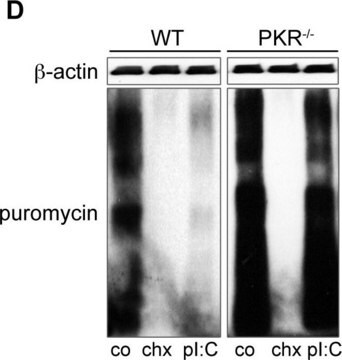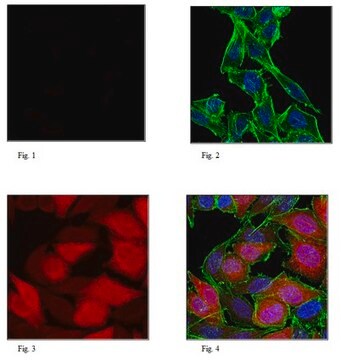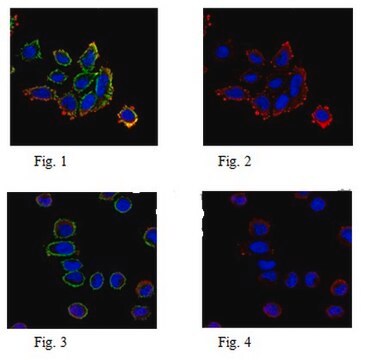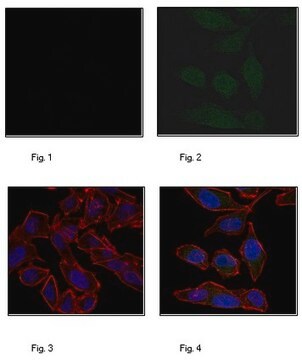MABE343-AF488
Anti-Puromycin, clone 12D10, Alexa Fluor™ 488 Conjugate Antibody
clone 12D10, 0.5 mg/mL, from mouse
Synonim(y):
Alexa Fluor 488 antibody
About This Item
Polecane produkty
pochodzenie biologiczne
mouse
Poziom jakości
białko sprzężone
ALEXA FLUOR™ 488
forma przeciwciała
purified antibody
rodzaj przeciwciała
primary antibodies
klon
12D10, monoclonal
reaktywność gatunkowa
human
stężenie
0.5 mg/mL
metody
immunocytochemistry: suitable
Warunki transportu
wet ice
docelowa modyfikacja potranslacyjna
unmodified
Opis ogólny
This product is a conjugated version of Cat. No. MABE343.
Specyficzność
Immunogen
Zastosowanie
Epigenetics & Nuclear Function
Cell Cycle, DNA Replication & Repair
Jakość
Immunocytochemistry Analysis: A 1:2,500 dilution of this antibody detected Puromycin-incorporated neosynthesized proteins in HeLa cells treated with Puromycin only.
Alexa Fluor™ is a registered trademark of Life Technologies.
Opis wartości docelowych
Postać fizyczna
Przechowywanie i stabilność
Informacje prawne
Oświadczenie o zrzeczeniu się odpowiedzialności
Nie możesz znaleźć właściwego produktu?
Wypróbuj nasz Narzędzie selektora produktów.
Kod klasy składowania
12 - Non Combustible Liquids
Klasa zagrożenia wodnego (WGK)
WGK 2
Temperatura zapłonu (°F)
Not applicable
Temperatura zapłonu (°C)
Not applicable
Certyfikaty analizy (CoA)
Poszukaj Certyfikaty analizy (CoA), wpisując numer partii/serii produktów. Numery serii i partii można znaleźć na etykiecie produktu po słowach „seria” lub „partia”.
Masz już ten produkt?
Dokumenty związane z niedawno zakupionymi produktami zostały zamieszczone w Bibliotece dokumentów.
Nasz zespół naukowców ma doświadczenie we wszystkich obszarach badań, w tym w naukach przyrodniczych, materiałoznawstwie, syntezie chemicznej, chromatografii, analityce i wielu innych dziedzinach.
Skontaktuj się z zespołem ds. pomocy technicznej






